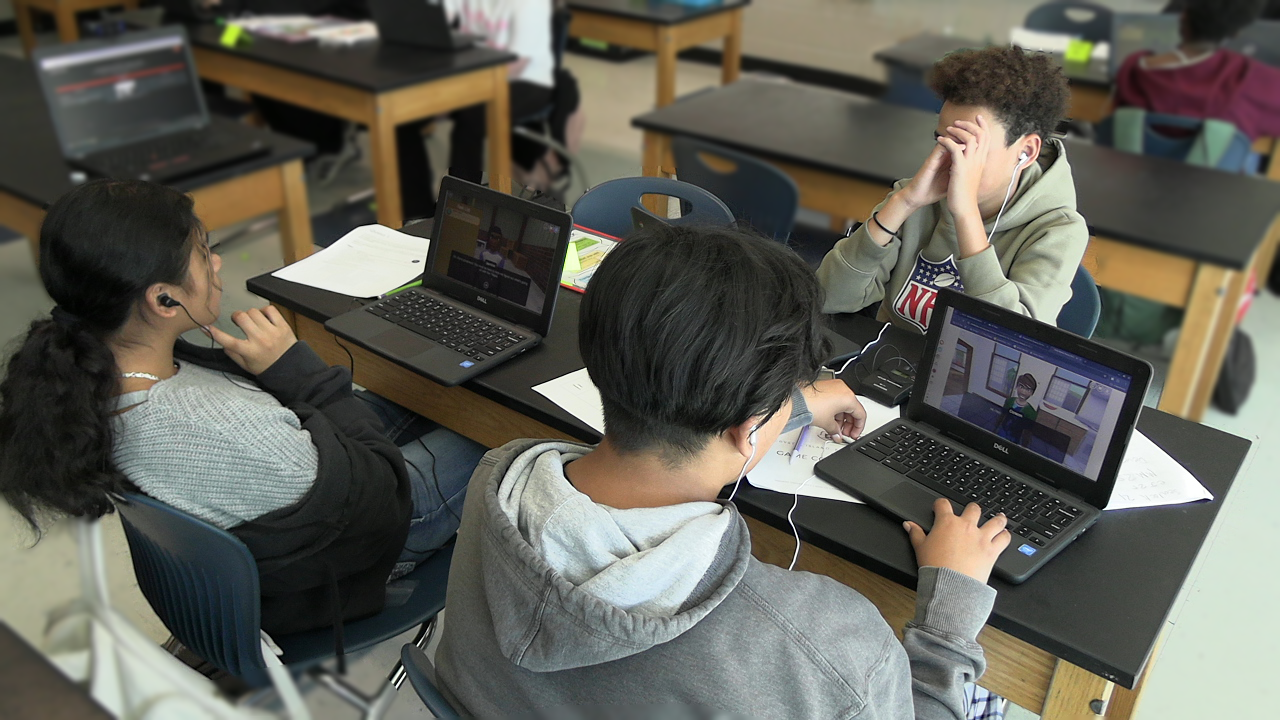Harnessing AI Prompts to Build Critical Thinking in Classrooms
As an instructional designer and educational coach at the Friday Institute, I work with educators navigating both the possibilities and challenges of generative artificial intelligence (AI) in the classroom. The excitement comes from AI’s ability to engage students in deeper learning, while the hesitation often stems from concerns about over-reliance, ethical use and the unknowns of this evolving technology. However, when used intentionally, AI can serve as a powerful thinking partner—one that encourages students to ask better questions, refine their reasoning and strengthen their critical thinking skills.
AI as a Tool for Inquiry and Exploration
AI enhances learning by prompting deeper analysis, encouraging curiosity and expanding students’ perspectives. When used effectively, it strengthens reasoning rather than replacing it. The key is in how we frame AI prompts. When students learn to craft their own AI inputs thoughtfully, they take ownership of their learning, engage in metacognition and become more discerning users of information.
Using the RAFT Framework to Design Critical Thinking Prompts
One approach I encourage educators to use is the RAFT framework—a simple but effective strategy that helps shape prompts to encourage higher-order thinking.
- R – Role: Who is responding? This helps students approach a topic from a specific perspective.
- A – Audience: Who are they communicating with? Considering the audience sharpens clarity and tone.
- F – Format: How should the response be structured? This ensures coherence and purpose.
- T – Task: What is the challenge or objective? A well-defined task drives deeper engagement.
By guiding students to create their own prompts using RAFT, we help them think critically about what they are asking, not just what they are answering.
Examples of Student-Generated AI Prompts That Foster Critical Thinking
Here’s how educators can work with students to develop their own prompts that leverage AI for deeper learning:
- Elementary Level:
- Lesson Idea | Students can refine their story by evaluating AI-generated details, making adjustments and explaining their reasoning to peers or in a written reflection.*
- RAFT Prompt Input Example | Role: A detective | Audience: A classroom of young learners | Format: A mystery story | Task: Create a short story where a character must use problem-solving to uncover a secret.
- Middle School:
- Lesson Idea | This task challenges students to analyze sources, form arguments and evaluate AI-generated content for credibility.
- RAFT Prompt Input Example | Role: A historian | Audience: A museum board | Format: A persuasive letter | Task: Argue why an underrepresented historical figure deserves a museum exhibit.
- High School:
- Lesson Idea | Students can compare AI-generated arguments with their research and critique potential biases.
- RAFT Prompt Input Example | Role: A detective | Audience: A classroom of young learners | Format: A mystery story | Task: Create a short story where a character must use problem-solving to uncover a secret.Role: A journalist | Audience: A general news audience | Format: A debate article | Task: Present both sides of an argument on AI’s role in job automation.
- College & Beyond:
- Lesson Idea | Students can refine AI-generated responses, fact-check claims and push discussions further.
- RAFT Prompt Input Example | Role: An ethicist | Audience: A university ethics board | Format: A position paper | Task: Explore the ethical dilemmas of AI-generated art in creative fields.
*Note: When incorporating AI with younger students, it is recommended that teachers model its use and provide demonstrations in whole-class or small-group settings. This approach ensures appropriate guidance and oversight, as generative AI tools may have terms and policies that are not suitable for independent student use.
Empowering Educators and Students to Engage with AI Thoughtfully
AI should be seen not as a shortcut to information but as a tool that fosters deeper inquiry and more nuanced thinking. By teaching students how to design meaningful prompts, we equip them with essential skills: questioning, analyzing, revising and evaluating. These are the same skills they need to navigate an increasingly AI-infused world.
As educators, our role is to guide students in using AI critically and ethically—encouraging them to refine outputs, challenge assumptions and engage in deeper discussions. AI is not a replacement for critical thinking; it is an opportunity to expand and elevate it.
The RAFT (Role, Audience, Format, Topic) writing strategy is a well-known instructional approach designed to help students understand their role as writers, the audience they are addressing, the format of their writing and the topic they are exploring. For more details, you can visit the original source: Reading Rockets – RAFT Writing Strategy.

@jaclynbstevens | jlbell@ncsu.edu
- Categories:


